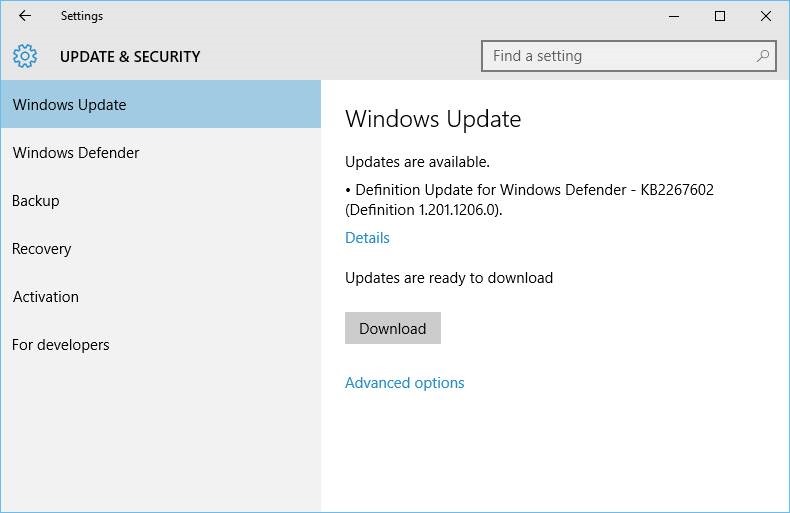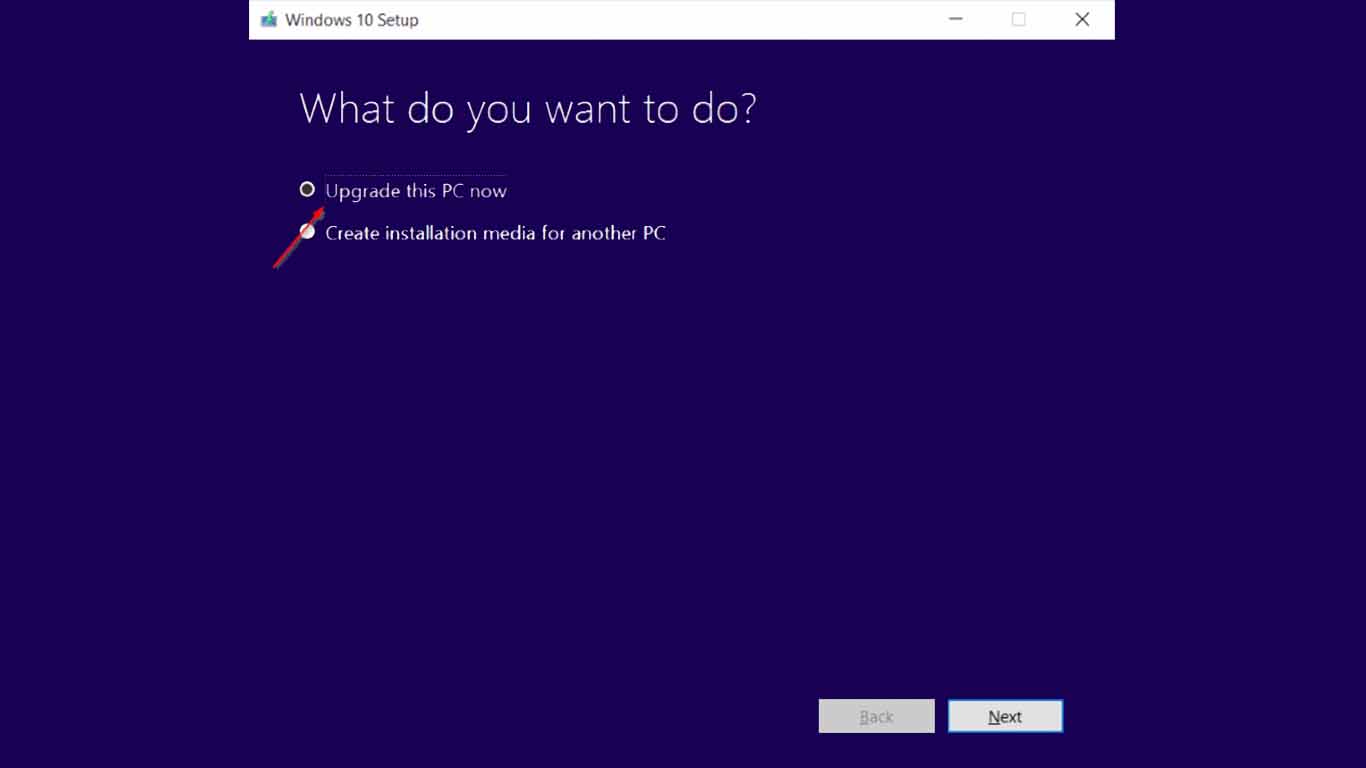- Cara Menghentikan Windows Update 10
- Cara Update Windows 10 Offline
- Microsoft Windows Update 10
- Cara Update Windows 10 Pro
- Cara Update Windows 10 Otomatis
- Windows 10 Free Upgrade
- Cara Update Windows 10 Terbaru
- Cara mematikan update windows 10 secara permanen dapat dilakukan oleh siapa saja bahkan untuk pemula yang baru mengerti komputer. Perkembangan windows besutan microsoft tidak pernah berhenti untuk memberikan yang terbaik bagi penggemar setia windows.
- How to Reset Windows Update in Windows 10 Published by Shawn Brink Category: Windows Update & Activation. How to Reset Windows Update in Windows 10 Windows Update keeps Windows 10 updated by downloading and installing the latest updates, drivers, and hotfixes released by Microsoft. Sometimes you may have an issue with Windows.
Catatan: meskipun petunjuk ini untuk Windows 10, prosedur ini juga bekerja dengan versi sebelumnya seperti Windows 7, 8, dan 8.1. Update Windows 10 Secara Offline Untuk memperbarui Windows mesin secara offline Anda harus terlebih dahulu men-download semua update yang tersedia untuk lokasi Anda bisa dengan mudah mengakses, seperti USB drive.
Every time Microsoft releases a new cumulative update for Windows 10, it appears on Windows Update servers. For end users, their computers fetch updates automatically from these servers, utilizing valueable internet bandwidth. While Windows Update has some tricks of its own related to Delivery Optimization to share updates across other PCs in a network, it is sometimes convenient to download the offline installer of a big update. If you have more than one computer and would like to save your time and bandwidth, you can download and install the update manually on all of them.
RECOMMENDED: Click here to fix Windows errors and optimize system performance
Also, this can be useful when you need to update a device which is not connected to the Internet directly or all the time. It can be an offline computer, a computer behind a proxy server, or a virtual machine.
Microsoft releases Windows 10 updates regularly to fix bugs and vulnerabilities to improve the stability and functionality of the OS. Microsoft is using several update servers in different regions. Due to this, sometimes updates do not appear for certain countries and languages for long periods of time. In such a situation too, you might want to manually download and install updates.
While Windows Update is the primary service for update redistribution, there is a special web site which hosts update packages. It is called the 'Microsoft Update Catalog'. It is useful to grab update packages manually. After some recent changes made to it by Microsoft, it can be used with any modern browser.
Note: Some update packages might even be exclusively published on Microsoft Update Catalog. Usually, such fixes affect a small select group of users, so the majority of consumers do not need to download and install them.
To manually download and install Windows 10 updates, do the following.
Manually Download and Install Windows 10 Updates
Step 1: Open the Microsoft Update Catalog website with your browser.
Step 2: Perform a search by entering the KB number of the update in the search box. For example, KB4056892.
Step 3: Click on the Download button next to the 32-bit and 64-bit Windows 10 version links. Tip: You can quickly find if you are running a 32-bit or 64-bit Windows version.
Step 4: Download the update using the link that appears on the next page.

The update package file can be either in MSU or CAB format. Most of the time, you will deal with MSU packages.
Cara Menghentikan Windows Update 10
To install the downloaded Windows 10 update, please refer to our excellent tutorial:
That's it.
RECOMMENDED: Click here to fix Windows errors and optimize system performance
Windows Update is an essential component on every major release of Windows 10, as it allows the OS to download and install the latest updates with bug fixes, security patches, and drivers. Also, on Windows 10, it’s also the mechanism to obtain new feature updates and preview builds. However, there will times when your device may not be able to download or install updates, because of a specific error message, Windows Update not being able to connect to the Microsoft servers, and many other problems.
Usually, users may come across this type of problems when the Windows Update agent related services stop working, there’s an issue with the update cache, or some components are corrupted. In these situations, you can reset the Windows Update on Windows 10 to fix most problems.
In this guide, you’ll learn the steps to reset the Windows Update components using the “Windows Update Troubleshooter” utility and the instructions to use Command Prompt to manually fix Windows Update and get security patches, drivers, and features downloading again on your computer. However, before using the Command Prompt option, make sure to use the instructions to install the most recent update manually, Service Stack Update (SSU), and repairing system files first.
Cara Update Windows 10 Offline
Microsoft Windows Update 10
How to reset Windows Update using Troubleshooter tool
Use these steps to reset the Windows Update components using the automated troubleshooter:
Download the Windows Update Troubleshooter from Microsoft.
Double-click the WindowsUpdateDiagnostic.diagcab file to run the troubleshooter.
Select the Windows Update option.
Click the Next button.
Click the Try troubleshooting as an administrator option (if applicable). Re-select your option and click the Next button again.
Click the Close button.
Open Windows Update Troubleshooter again.
Select the Windows Networking Diagnostics option to resolve any networking issues preventing updates from downloading.
Click the Next button.
Click the Close button.
Restart your computer.
Once your PC restarts try to update Windows 10 one more time and now it should work as expected.
How to fix Windows Update installing latest update manually
Use these steps to install an update manually, which can help to fix problems with Windows Update on Windows 10:
Open the Windows 10 update history website.
In the left pane, browse the latest update for your version of Windows 10 and note the KB number of the update.
Quick tip: You can check your current version on Settings > System > About, and under the “Windows Specifications” section, see the version information.Open the Microsoft Update Catalog website.
Search for the knowledge base (KB) number of the update.
Download the update for version of Windows 10 that you’re running (32-bit (x86) or 64-bit (x64)).
Double-click the file to install the update.
Restart your computer.
Once you complete the steps, the device should have the latest update installed. The update should have also fixed the problem with Windows Update. You can check clicking the Check for updates button in the Windows Update settings page.
How to fix Windows Update installing latest Servicing Stack Update (SSU)
Cara Update Windows 10 Pro
Use these steps to make sure your computer has the most recent Servicing Stack Update to fix Windows Update problems on Windows 10:
Open Settings.
Click on System.
Click on About.
Under the “System type” section, check whether you’re running the 32-bit or 64-bit version of Windows 10.
Open the Microsoft Update Catalog website.
Download the most recent Servicing Stack Update which is described as KB4090914 for version you’re running (32-bit (x86) or 64-bit (x64)).
Double-click the file to install the update.
Restart your computer.
After restarting your device, you should now be able to download and install the update using the Settings app.
How to fix Windows Update repairing corrupted system files

Use these steps to repair system files using Deployment Image Servicing and Management (DISM) and System File Checker (SFC) to fix Windows Update problems:
Open Start.
Search for Command Prompt, right-click the top result, and select the Run as administrator option.
Type the following DISM command to repair corrupted system files and press Enter:
Type the following SFC command to repair system files and press Enter:
After completing the steps, Windows Update should have been repaired, and you can check for updates again to verify.
How to reset Windows Update using Command Prompt
Use these steps to reset the Windows Update components manually using Command Prompt on Windows 10:
Open Start.
Search for Command Prompt, right-click the top result, and select the Run as administrator option.
Type the following commands to stop the Background Intelligent Transfer Service (BITS), Windows Update service, and Cryptographic service, and press Enter on each line:
Quick Tip: You may need to run the command more than ones until you see the message that the service has stopped successfully.Type the following command to delete all the qmgr*.dat files created by BITS from your PC. and press Enter:
Type Y to confirm the deletion.
Type the following commands to clear the Windows Update cache to allow Windows 10 re-download the updates, instead of using the files already downloaded on your system that might be damaged and press Enter on each line:
Quick Tip: We’re using the remove directoryrmdircommand with the/Sswitch to delete the specified directory and all subdirectories within the main folder, and the/Qswitch is used to delete directories quietly without confirmation. If you get the message “The process cannot access the file because it is being used by another process.”, then repeat step 1 and try again, as one of the services might have restarted unexpectedly.Type the following commands reset the BITS and Windows Update services to their default security descriptor, and press Enter on each line:
Type the following command to move to the System32 folder and press Enter:
Type the following commands to register all the corresponding BITS and Windows Update DLL files on the Registry, and press Enter on each line:
Note:regsvr32is a command-line tool that will help you to register .DLL files as command components in the registry, and we’re using the/Sswitch to specify the tool to run the command silently without prompting additional messages.Type the following commands to reset the network configurations that might be part of the problem (but do not restart your computer just yet), and press Enter on each line:
Type the following commands to restart the BITS, Windows Update, and Cryptographic services, and press Enter on each line:
- Restart your computer.
Once you have successfully completed the process Windows Update should have reset and it should be working again on your Windows 10 device.
You can also use the above instructions to fix the problem when Surface Pro 6, Surface Book, Surface Laptop, or any other Surface can’t seem to download a new firmware update.
Update May 30, 2019: This guide has been updated to reflect to work with the latest version of Windows 10. (Originally published on February 2016, updated on May 2018.)